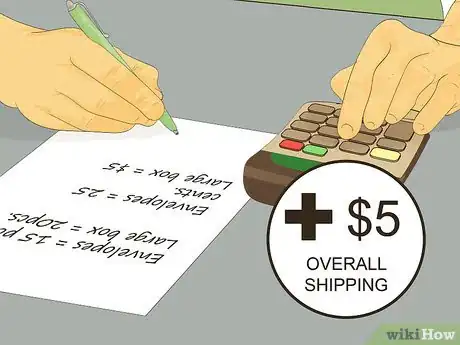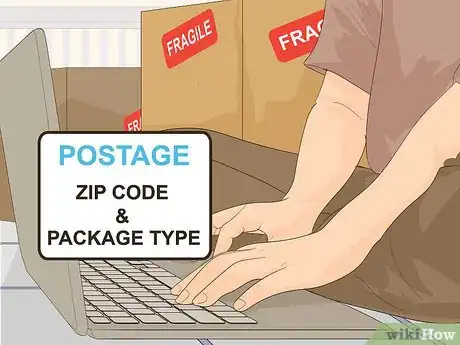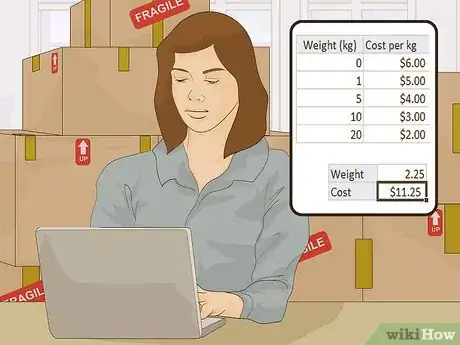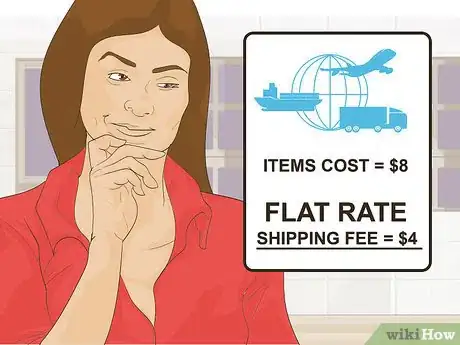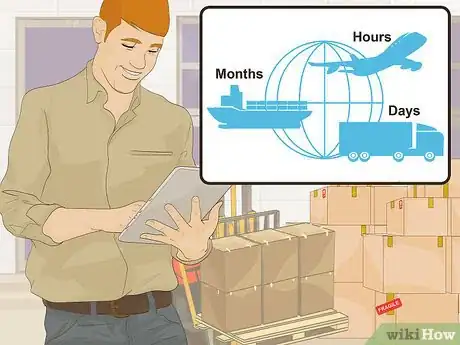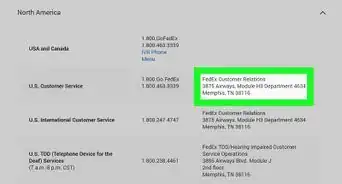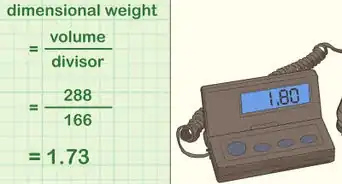This article was co-authored by wikiHow Staff. Our trained team of editors and researchers validate articles for accuracy and comprehensiveness. wikiHow's Content Management Team carefully monitors the work from our editorial staff to ensure that each article is backed by trusted research and meets our high quality standards.
This article has been viewed 49,400 times.
Learn more...
When you're sending out packages, shipping costs can really start to add up. Things like the type and weight of the package and the postage you choose will all affect your shipping rates. Whether you're shipping a gift to a friend, ordering items online, or sending packages regularly for your business, you can use pre-set shipping rates or a carrier rate calculator to get an idea of your shipping costs ahead of time. We're here to help—our how-to guide will show you how to estimate your shipping costs before you send your package.
Steps
Figuring out the Cost to Send a Package
-
1Take packaging into account. The type of packaging you use affects costs. Light packaging tends to be inexpensive. Smaller boxes add about a dollar to shipping costs, while light envelopes add about 25 cents. However, using a larger box can cost up to $5. While you can't know the exact cost until being charged at the post office, these guidelines can help you determine a rough estimate.
- For example, if you're shipping a larger box, add an estimated $5 onto your overall shipping costs.
-
2Weigh your item. If you have a scale at home, weigh your item first. Make sure you weigh the package as you'll send it out. The weight, in addition to other information, can be entered into an online calculator to help you estimate a rough shipping cost. Jot it down and gather other information before using an online calculator.[1]
- Use an online calculator associated with the shipping company you're using. If you're shipping through FedEx, for example, use a calculator on their website.
Advertisement -
3Figure out postage. Postage varies depending on the type of package you're sending and your state. You must use an individual online calculator catered to your state to determine a postage estimate. You enter information such as your zip code and the type of package you're sending. From there, you will get a price estimate for postage.[2]
-
4Enter your information into an online calculator. You can find calculators online to help you determine shipping costs. Try to find a calculator through the mail carrier you're using. For example, if you're using UPS, use their online price calculator. Enter the information you gathered, such as the package weight, to get an overall cost estimate.[3]
- Remember, prices may vary when you arrive at the post office. Budget to potentially pay a little extra in shipping costs.
Determining Shipping Costs for Your Online Store
-
1Account for handling. If you have workers handling your objects prior to shipping, remember to account for this when determining shipping costs. How long will it take to package the items and what do you pay your workers? To figure out handling costs, multiply how long it take your employees to package items and divide that by 60. Then, multiply that by their hourly wage. This should give you the average cost of handling per item.
- For example, say your employees take 15 minutes to package and send an item. Divide that by 60 to get .25. If you pay your employees $10 an hour, multiple that by .25 to get $2.50. This means your handling costs are $2.50.
-
2Evaluate the cost of packaging. Think about what type of packaging you're using. Larger boxes can cost up to $5 to ship, while small envelopes cost only 25 cents. Lightweight boxes generally cost a dollar. Factor these costs in when figuring out your rough shipping costs for your items.
- Later, as you decide between a calculated or flat rate, you can decide what chunk of packaging costs you should pass on to your customers.
-
3Weigh your items. If you don't already have a scale at home, buy one. Weigh your items and then use an online calculator to determine how much you'll be charged based on your carrier and the object's weight.
- Make sure to weigh your objects in their packaging.
-
4Use a calculated weight for lightweight items and specialty shipping. A calculated rate means you would charge customers shipping based on factors such as the product type, weight, and so on. A calculated rate has both pros and cons you should consider before adopting it.[4]
- Use a calculated weight if you're selling lightweight items and/or offering different methods of delivery (i.e., standard shipping, two day shipping, overnight shipping). Lightweight items cost less to ship, so shipping costs won't add a lot to a customer's bill, and people are willing to pay more for quick services.
- Calculated shipping rates have some drawback. If your shipping rates are expensive, customers may abandon their items at checkout when their shipping costs are calculated. Flat rates tend to make more sales.
-
5Use a flat rate to increase sales. A flat rate means you charge one price for shipping, regardless of the item's weight, packaging, and so on. You should know the average shipping rate for your items. For example, if items cost around $8 to ship, a $4 flat rate shipping fee is reasonable.[5]
- Flat rates reduce the likelihood consumers will abandon their items at checkout. Customers know shipping costs ahead of time and will account for these costs when making purchases.
- The main drawback of a flat rate shipping fee is that you lose some profit. However, as flat rates generally generate more sales, the extra money may makeup for this.
Determining Shipping Costs for Deliveries
-
1Review a website's shipping and handling policies. The best way to figure out how much shipping will cost is to review a store's guidelines. The company website should explain whether the shipping rates are flat or calculated so you can get a sense of how much you'll be paying in shipping.
- Some stores may provide an online calculator so you can determine your potential shipping costs prior to placing your order.
-
2Pay attention to different prices based on speed. Many stores charge an extra fee for faster deliveries. While something standard shipping may be free or only come with a small charge, some stores may charge a hefty fee for two day or overnight shipping.[6]
-
3See if shipping rates vary based on item type. Shipping rates often vary depending on the type of object you're ordering. When reviewing a store's policies, see if shipping rates vary by type. Expensive, breakable objects, such as electronics, may come with extra fees.[7]
- This is especially important when ordering from large retail sites, such as Amazon, that sell a wide variety of objects.
References
- ↑ http://pages.ebay.com/seller-center/shipping/shipping-basics.html
- ↑ https://postcalc.usps.com/
- ↑ https://www.usps.com/nationalpremieraccounts/calculaterates.htm
- ↑ https://cart66.com/blog/set-shipping-rates-online-store/
- ↑ https://cart66.com/blog/set-shipping-rates-online-store/
- ↑ https://www.amazon.com/gp/help/customer/display.html?nodeId=201118510
- ↑ https://www.amazon.com/gp/help/customer/display.html?nodeId=201118510
About This Article
To determine how much it will cost to ship something, figure out what packaging you need. Light envelopes add about 25 cents to a shipment while large boxes can add up to $5. Weigh the item while it’s packaged, then check what your carrier charges for postage. Use an online calculator to estimate your shipping costs. For tips on determining how much to charge customers for shipping, scroll down!
